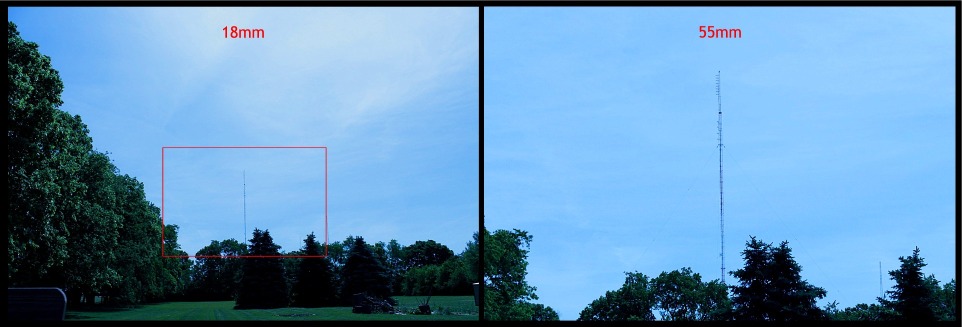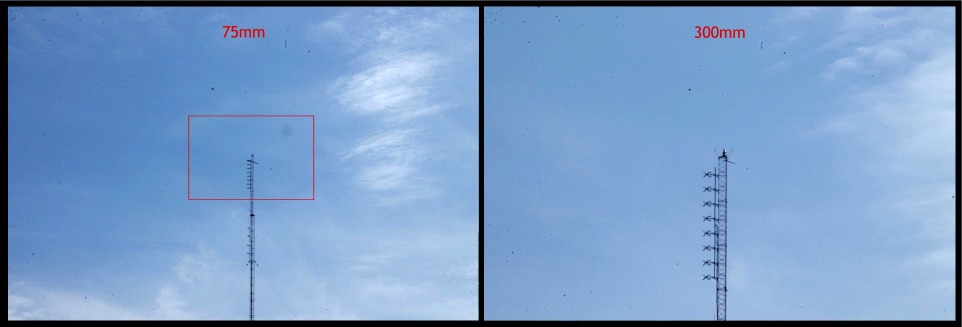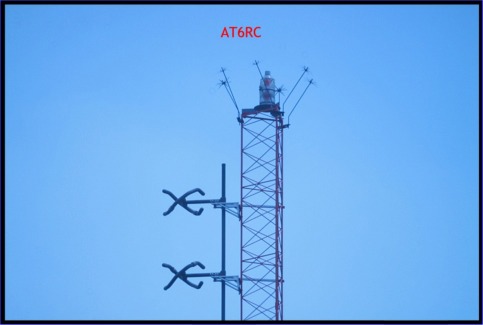Basic Photography Terms and Concepts
In an effort to better and more fully understand the terminology associated with photography and ultimately, astrophotography, I complied a short list of common terms and their definitions as well as some brief examples of their applications. Included are specific examples of my hardware setup and how these terms apply to them directly.
Term <tl;dr>
Definition. Additional information.
ISO <Gain>
Basically, gain. The trade-off being noise; the higher the ISO, the more noise. A photographer’s rule of thumb is to never touch the ISO until you cannot get enough light using the aperture and shutter speed. For astrophotography, the higher the ISO (usually) the better because the light is SO feeble and because ‘stacking’ and calibration frames can counteract the noise.
Aperture <Size of lens/mirror>
The aperture is the diameter of the primary lens or mirror.
Focal length <Field of view; Longer focal length, smaller FOV / shorter focal length, wider FOV>
Focal length is the distance (given in millimeters) between the telescope’s primary lens or mirror and the point where the light rays come together in focus. Focal length determines the FOV and magnification. Focal length determines image scale (for a given camera). Longer focal lengths and bigger scopes are harder to guide precisely (because of a smaller field of view).
Focal ratio <The lower the better; the faster the images can be captured>
The focal ratio is the focal length divided by the aperture. The focal ratio is basically a measure of how steep the light cone is inside the telescope or camera lens. It helps to link focal ratio and F-stop; they’re similar ideas and have similar impact. If you go from an F8 scope to an F5.6, you’re dropping a full Fstop and each sub will take 1/2 the time. Focal ratio determines how fast you can capture the image. An f/9 scope is going to be better for resolving detail in galaxies, where as an f/4 scope is going to be better for imaging expansive swaths of sky packed with huge nebula. F-ratio is a matter of resolution, in the end. Faster (lower F number) scopes are difficult/expensive to make.
F/stop <The lower the better; the faster the images can be captured>
Lenses are marked with a series of f/stops, each one lets in half as much light as the previous one. The light-gathering ability of a lens is determined by its area, and f/stops are determined by diameter. Area is related to diameter squared. The progression of f/stops, 1 – 1.4 – 2 – 2.8 – 4 – 5.6 – 8 – 11 – 16 – 22 – 32, are powers of the square root of 2. The area of the hole doubles and halves, it’s just represented by a ratio on the lens. The smaller the f/stop, the more light the lens gathers and the ‘faster’ the lens is; the bigger the f/stop, the less light is gathered and ‘slower’ the lens is. When the f/stop is listed as part of the specifications of a lens, the smallest f/stop is given (i.e. the widest aperture the lens can achieve).
Photography ‘f/stop’ versus telescope focal ratio
-In regular photography, the f/stop is technically the same thing as the focal ratio (like telescopes), but you think of it more in terms of the ‘aperture,’ because you can manipulate the aperture in camera/lens photography and you cannot with telescopes. Basically, for practical application, the f/stop can be thought of as synonymous with aperture – or how much light is being let in (even though technically it’s different for different focal lengths and cameras).
-In astronomy and with telescopes, the focal ratio is important because it determines how fast you can capture an image.
–Magnification / not really important—
Magnification
Focal length is the major determining factor of any given telescope’s magnifying power. At lower magnifications, the image is small, bright and well-resolved, but too much magnification makes for nothing more than a big, blurry image. Telescopes can only gather so much light and high magnification means you’re just spreading that same amount of light over a larger area – resulting in useless or “empty” magnification. Determine a telescope’s practical magnification limits: Multiply the objective lens or mirror’s diameter (in millimeters) by 2. For example, a 100mm telescope would have a practical magnification limit of 200X.
How To Determine Your Telescope’s Magnifying Power
Divide the focal length of the telescope by the focal length of the eyepiece. For example, if you have a telescope that has a 1000mm focal length and you are using a 20mm eyepiece, you will be getting 50X (1000mm/20mm = 50X). If you place a 20mm eyepiece in a telescope with a 500mm focal length, you’ll get 25X (500mm/20mm = 25x). That is why the same eyepiece appears to behave differently in different telescopes.
A longer focal ratio means:
-A narrower field of view (see less of the sky at once), using the same eyepiece. Quality long f-ratio scopes are sometimes nicknamed “planet killers”
-The scope has a more forgiving “depth of focus” (a wider sweet spot of focus)
-The telescope is typically longer and heavier than shorter focal ratios of the same scope type (folded designs, like catatropic scopes, are an exception). Therefore requires a sturdier, more expensive mount.
-Longer focal ratios have a wider tolerance in design and manufacture. This means that they are usually cheaper (for a similar quality of optics)
-Longer focal ratio telescopes are more forgiving for lower-quality eyepieces
-Longer focal ratio reflectors are easier to collimate because they have a wider tolerance for error
A shorter focal ratio means (basically reverse all of those points):
-A wider field of view (see more of the sky at once), using the same eyepiece. Depending on the exact f-ratio, these are sometimes called “wide-field” or “rich-field” scopes.
-The scope has a more unforgiving “depth of focus” (harder to get the sweet spot of focus)
-The telescope is typically shorter and lighter than longer focal ratios of the same scope type (so easier to transport and handle, allows a lighter mount)
-Shorter focal ratios have a tighter tolerance in design and manufacture. This means that they are either more expensive (apochromatic refractors) or give less perfect views (achromatic short-tube refractors that show lots of false color)
-Shorter focal ratio telescopes are less forgiving for lower-quality eyepieces, and typically require more expensive eyepieces to get the best views
-Shorter focal ratio reflectors are harder to collimate because they have a narrower tolerance for error
-My Telescope Examples-
Zhumell:
Focal length: 1250mm
Mirror diameter: 10in (254mm)
Focal ratio: f/5
Practical mag. limit: 127x
Eyepiece: 12.5mm – Magnification: 100x
Eyepiece: 9mm – Magnification: 139x
AT6RC:
Focal length: 1370mm
Mirror diameter: 6in (152mm)
Focal ratio f/9
Practical mag. limit: 76x
Eyepiece: 12.5mm – Magnification: 110x
Eyepiece: 9mm – Magnification: 152x
Images of my different setups to illustrate FOV:
Canon EOS T3 Rebel / 18mm-55mm Lens:

Canon EOS T3 Rebel / 75mm-300mm Lens (don’t mind the dust):

Canon EOS T3 Rebel / AT6RC FL: 1370mm, FR: f/9:

SEE ALSO
A Tedious Explanation of the f/stop
http://www.uscoles.com/fstop.htm
A Tedious Explanation of Depth of Field
http://www.uscoles.com/depthoffield.html
-Calculators to figure out image scale and scope-camera combinations:
12DString:
http://www.12dstring.me.uk/fovcalc.php
Blackwater Skies:
http://www.blackwaterskies.co.uk/p/imagingtoolbox.html
-Decimal degrees to degrees, minutes, seconds:
http://www.rapidtables.com/convert/number/degrees-to-degrees-minutes-seconds.htm

Do you remember when they put that top section on the tower? Hoisted it up and bolted it down. Crazy. Just a measly 750′ tall. Those guys are a different breed. Jerking that tower around til all lined up. I watched them through my old antique telescope. I don’t think you had a telescope then. They’re nuts. I’ll stick to the ground.
Ha! I DO remember that… watching them from your old back porch? Yeah man, no way… I’ll be down here with you!